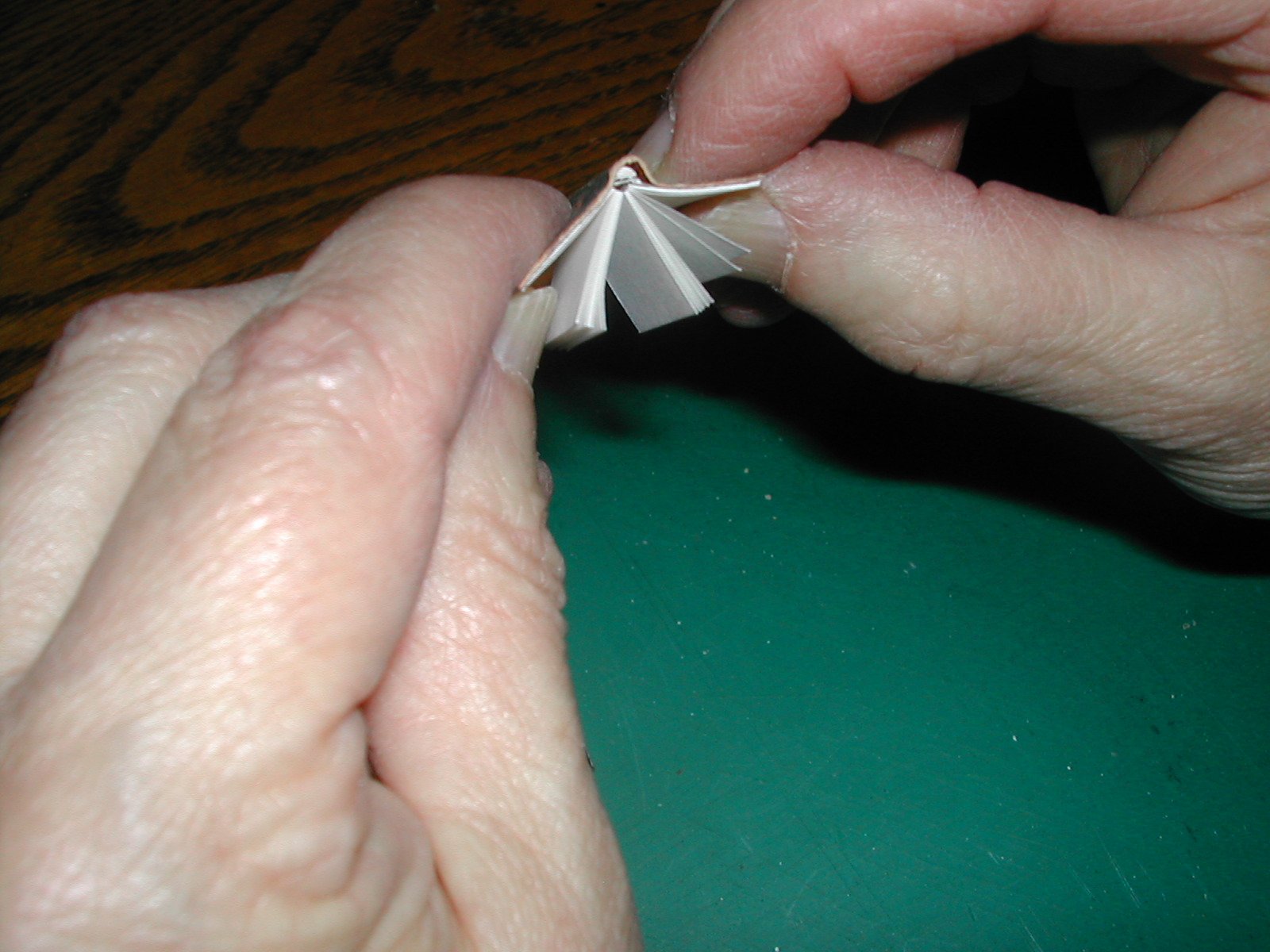Here is a photo of a completed book showing that they have real pages
that can be opened.
In most cases, the books are held in place using a rubbery film that
can be easily removed and will not stick to the glossy covers. Key
books in easily reached shelves are left loose on the shelves so that
people can
examine them more closely. But because the book pages are held tighter
near the spine, when books are placed on shelves they acted like a
spring
and if one book is touched, the others all sprung out on their own
accord. As
it can take many hours to load one self of a bookcase, the semi
permanent method
was used when loading them.
Because the books are different sizes, it was necessary to make sure
that book spines remained straight when loaded on the shelves. A "stop
strip"
of wood was glued onto each shelf to keep the books in a foreword
position
and to keep them from sliding to the back of the shelves.
Many of the books have very tiny gold lettering on their spines and
these
titles can be read using a very strong magnifying glass.
|
 |
